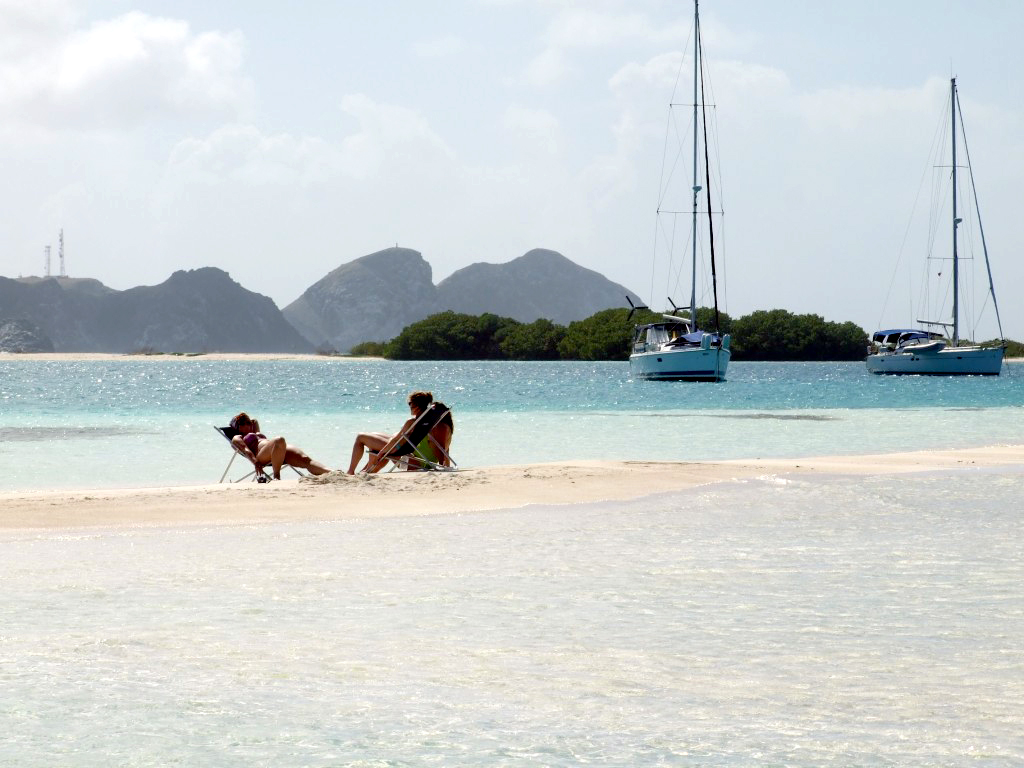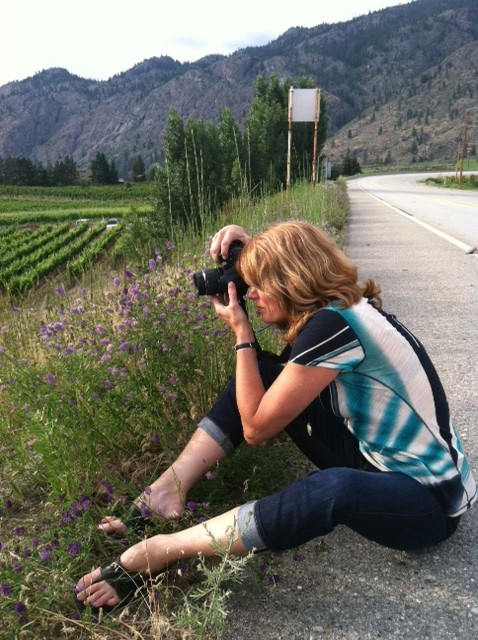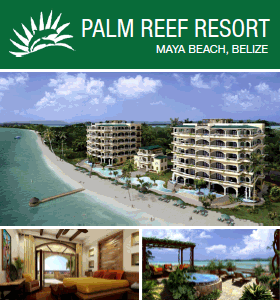At Los Roques, off Venezuela, you can have an island all to yourself
Article appeared in the Ottawa Citizen
 When Spanish explorers arrived at Lake Maracaibo in what is now Venezuela, the natives were living in huts on stilts and using boats shaped like gondolas, which reminded the Spaniards of Venice. They promptly called the area Venezuela — Little Venice. Eventually, the name was adopted for the large land mass surrounding the lake.
When Spanish explorers arrived at Lake Maracaibo in what is now Venezuela, the natives were living in huts on stilts and using boats shaped like gondolas, which reminded the Spaniards of Venice. They promptly called the area Venezuela — Little Venice. Eventually, the name was adopted for the large land mass surrounding the lake.
These days, Italian tourists make a beeline to Venezuela’s tropical Los Roques islands. These denizens of Rome, Milan and Venice don’t cross the Atlantic just to visit a country named by Spanish explorers to honour an Italian city, though. There are far more reasons to spend a week or two in Los Roques.
Los Roques boasts some of the best coral reefs in the world for diving, consistent winds and protected lagoons for kite- and wind-surfing and dazzling, white-beach-lined cayes (sandy islands) that attract sun bathers and fly fishermen from around the world.
“You make kite?” Lusmila asks, her black eyes wide. My friend and I have just arrived back at the Posada Acuarela with a group of kite-surfers.
“No, but we might take a lesson,” I offer lamely, wishing to impress the go-to-girl at the posada (inn). In addition to Spanish, the hard-working, 26-year-old Lusmila, who is Venezuelan, speaks Italian and Spanish, German and a little English. Lusmila adamantly won’t let us practise Spanish or try even a few phrases of Italian. She insists on speaking English.
Los Roques is an Italian enclave in Venezuela’s Caribbean, surprising given Italy’s distance and the difficulty of getting here. Even though Los Roques has some of the best kite-surfing in the world, the beaches are why most of us are here. Sorry, Lusmila.
The majority of the posada owners in Los Roques are Italian, as are the tourists. There are only a few Americans and no other Canadians. El Gran Roque (or Big Rock) is the largest island in the archipelago of Los Roques. It’s the only inhabited island, about 160 kilometres north of mainland Venezuela and a 40-minute flight from Caracas. Reflecting the popularity of the island among Italian tourists, the restaurant menus include risotto and fish carpaccio. There are a disproportionately large number of places in this tiny town where you can get a decent espresso. There’s even a bocce ball court.
It was only 15 years ago when the island received electricity. In fact, the first posadas were renovated fisherman’s shacks. Today there are some 600 permanent residents and about 90 posadas, set amid some 1,400 square kilometres of lagoons, reefs, and the most beautiful beaches we have seen. “The Maldives of Venezuela,” as a tourist called them.
Acuarela, one of the most sophisticated of the posadas on the island (and there are many beautiful posadas to choose among), seamlessly blends indoors and out, with lush tropical plants filling every hallway, niche and corner. Furniture made with dark tropical wood, ornate wrought-iron doors and abstract paintings give it a cosmopolitan feel without relinquishing any Caribbean charm. The paintings are by the owner, Sicilian-born Angelo Belvedere, who splits his time between Caracas and Los Roques, when he isn’t exhibiting his works in Madrid or Barcelona. Creating Acuarela was a labour of love, says Belvedere. His name means “beautiful view.”
Island-hopping is a daily ritual. Excursions to the stunning “fantasy islands” which surround El Gran Roque, are part of the posada package, called “full board.” You can choose any of the islands, and the posada takes care of getting you there, supplying lunch with sandwiches and cold beer, beach chairs and umbrella (a must no matter where you go, as the islands offer no shade).
Los Roques was declared a national park and ecological reserve in 1972. The closest islands are only a 10- to 15-minute boat ride away; none of them have buildings other than a rustic restaurant or the occasional boathouse. The islands include Madrizqui, Francisqui, Selesqui, Carisqui and Nordisqui. They were named by English explorers and then renamed by Spanish cartographers. Northeast Cay became Nordisqui, Sailor’s Cay became Selesqui, and so on. Snorkellers can swim through schools of fish on Carisqui, fly fishermen can angle for bonefish off several of the islands and sunbathers can watch the kite-surfers’ stunts on Francisqui.
It is completely possible to find an island to yourself. We opt for Francisqui.
“10 a.m. and 10 degrees from the equator,” says Jésus, the guy hired by our posada to run guests back and forth to the islands. He smiles, the sun glinting off his gold teeth, as he moves our beach umbrella and packed cooler to a better spot. I move my toe into the shade of my umbrella. I am already so relaxed, I have only a fuzzy recollection of being whisked to this uninhabited island in a motorboat by two men in white Acuarela T-shirts. A black lizard is watching me as I eat my sandwich. When I throw a crust, it grabs the morsel and scurries, squirrel-like into the scrub. Pelicans dive mere metres from my legs. Boobies and terns dry their wings on resting boats.
The kite-surfers are in their own endorphin-fuelled paradise, practising their manoeuvres again and again in a constant wind that never lets them down. The lissome Italian girl changes into her bikini with extraordinary ease under a perfect pareo — the Italians have sunbathing down to a science. The water is a brilliant aqua, the air smells like fresh fig, the sand is blindingly white and the beach goes on forever.
By mid-afternoon, Francisqui is a pageant of idleness. The umbrellas have been placed at steep angles to create shade. The couples who this morning were strolling the beach to show off their tans are now curled up next to each other in fetal positions or are sitting waist-deep in shallow water. The designer kites of the more ambitious kite-surfers, which at first drew crowds to watch their daring jumps, are now just a distraction high in the spotless sky. The less ambitious surfers are already having a beer, their kites straddling the beach like giant spiders.
Los Roques strikes the perfect balance between comfort and rusticity. The atmosphere in the posadas and in the town is Caribbean casual. There are no cars, the streets are pure sand and everyone goes barefoot. Supplies are flown in from the mainland and fish is caught fresh every day. There are only a handful of restaurants. No discos and no nightlife to speak of. It is expensive to get here, but the posadas are reasonably priced. By law, none of the posadas can be larger than 15 rooms or taller than a single storey with a mezzanine.
“Jésus, Raphael or José — who should we bring with us tomorrow?” The animated pre-dinner conversation of the deep-sea fishermen, discussing the merits of their marine guides, wafts my way with the warm breeze on Acuarela’s front porch.
Perfect weather, lush decor, the anticipation of sumptuous Italian cuisine and the mix of kite-surfers, sun worshippers, divers, sailors and fishermen from around the world give Acuarela the buzz of a New York restaurant. It is hard to believe we are on an island that’s more than a hundred kilometres from the nearest continent.
The heat, which is unrelenting during the day, has dropped to comfortable temperatures at night. On the beach, posadas and bars put out candlelit tables or artful arrangements of beanbag chairs. The island dogs play dead on the beach. They like to fall asleep exactly as they hit the cool sand and no one disturbs them. After a day of unforgiving heat, this is a dog’s idea of paradise.
Los Roques is our idea of paradise too. I am already starting to think about coming back. In the meantime, perhaps I will take up kite surfing, or maybe Italian.
Diane Penwill is a freelance writer based in Toronto. She read about Los Roques in a newspaper article a few years ago and visited in February.
If You Go
When to go: February through April are off-peak at some posadas and perfect months to visit. Prices are lowest from May through July and September through November.
How to get there: Air Canada has regular direct service from Toronto to Caracas, Venezuela. This week, flights from Ottawa to Caracas, via Toronto, ranged from $328 to $1,386 one way. Round-trip airfare from Caracas to Los Roques is about $375 Cdn. (See Aerotuy’s website: www.tuy.com).
Where to stay:
Low-End
At Chez Judith, prices range from $80 per person for B&B to $160 for full-board (an all-inclusive package with bed and breakfast, dinner and daily excursions to the islands including box lunch, umbrella, chairs and towels).
See www.los-roques.com/chez-judith.htm
Mid-Range
La Cigala: From $95 per person for B&B to $175 for full-board. French spoken.
E-mail: posadalacigala@cantv.net
La Gaviota: From $100 per person for B&B to $200 for full-board. See www.posadalagaviota.com
High-End
Acuarela: From $155 per person for B&B to $268 for the deluxe suite and full-board, taxes included. See: www.posadaacuarela.com
More: www.losroques.org; www.explorepartners.com/posadas
Media
View Print Version of Article
Map
You can follow any responses to this entry through the RSS 2.0 You can skip to the end and leave a response. Pinging is currently not allowed.



